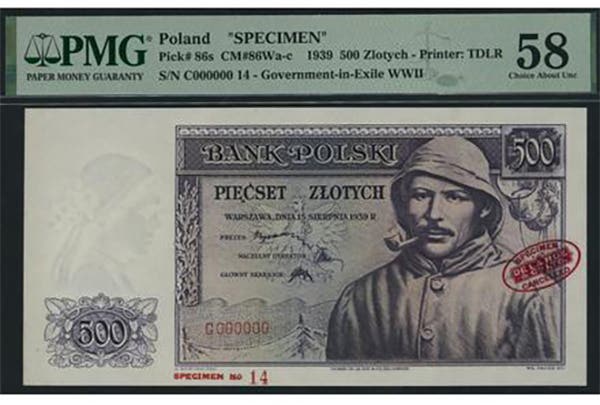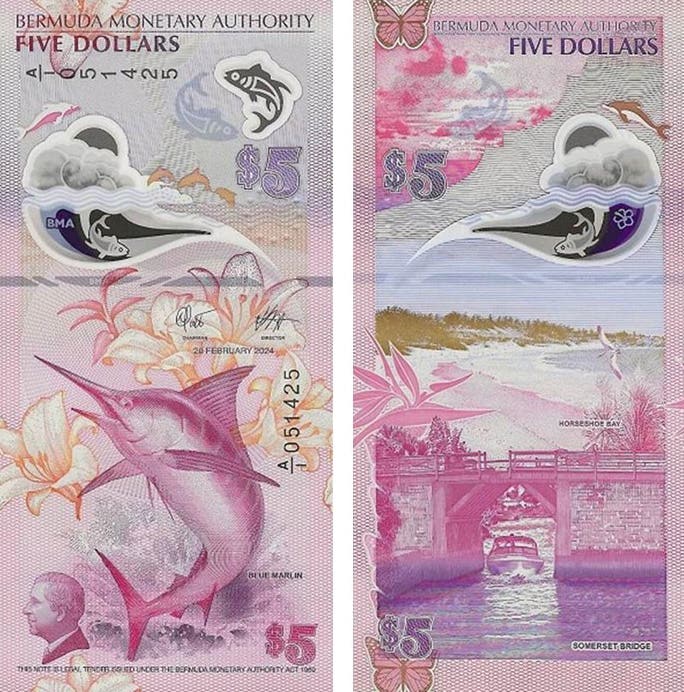Queens confused on Costa Rican notes
For reasons best known to the issuing banks, several early Costa Rican bank notes show vignettes of one and possibly two British Queens – although one was merely a Princess…
For reasons best known to the issuing banks, several early Costa Rican bank notes show vignettes of one and possibly two British Queens – although one was merely a Princess at time of issue.
One such note formed part of the “The Ibrahim Salem Collection of South America” offered by Spink in their Jan. 11 New York sale. The item in question was a rare specimen 50 pesos of El Banco Anglo-Costa-Ricense dated 1 January 1864 (P-S110s).
In their catalog description, Spink note that the Standard Catalog of World Paper Money, Specialized Issues, identifies the portrait at top center as that of Queen Victoria. Their sole comment concerning this ID was to end that sentence with an abrupt exclamation mark!
Certainly SCWPM does indeed name the woman who appears on all first (1864) issues of El Banco Anglo-Costa-Ricense as Queen Victoria: 1 peso to 100 pesos, P-S107 to P-S111A. But that identification is wrong. It is nothing like her.
A woman conceivably resembling a young Queen Victoria appeared on an earlier Costa Rican note: a Banco Nacional de Costa Rica 10 pesos of 1858, P-S211. She is tucked away somewhat uncomfortably at upper right enwrapped by the bank’s title. This would appear to be the sole Costa Rican note on which she may be shown.
The woman depicted on the Banco Anglo-Costa-Ricense first issues is Victoria’s daughter-in-law Princess Alexandra of Wales, formerly Princess Alexandra of Denmark. Her slender build, hair style, shape of her face and chin and, in particular, her strikingly long neck are dead giveaways. None were attributes of Britain’s monarch at the time.
The 1863 wedding of Alexandra to Edward, heir to the British throne, was a major international media event. The official wedding photo might well have provided the model for the BWC engraver of the Costa Rican vignette. The two are closely similar.
The identification of Alexandra is confirmed on the Museos del Banco Central de Costa Rica website. They are less confident of acknowledging Victoria but do point out the vignette’s hairstyling is similar to that in numerous portraits and effigies of the young Queen. The two profiles, however, differ. As an aside, Museos observes only two identifiable Costa Rican women have appeared on the country’s bank notes: Emma Gamboa and Carmen Lyra.
The question remains as to why British royals should appear on Costa Rican notes. Coffee is the probable contributing factor.
Starting in the early 19th century, coffee quickly became Costa Rica’s primary export. By the mid-1850s, its major market was Britain. Financing the growth of this trade was a number-one priority for Costa Rican banks particularly, providing the funding for an effective transportation route from the coffee fields of the Central Plateau to the Atlantic Ocean.
Banco Anglo-Costa-Ricense was founded in 1863 with British and Costa Rican capital. It was modeled on the Bank of England and would become one of the most successful banks in the country.
Along with British funds came British directors. Given the bank’s birth in the same year as a historic and internationally renowned royal wedding took place, perhaps the directors felt it politic to use the effigy of Britain’s new princess on the bank’s first note issue. It certainly would not do Costa Rican coffee harm in its most important world market.
Clearly many moons back a contributor to SCWPM got their royals confused. The entries for El Banco Anglo-Costa-Ricense P-S107 to P-S111A should not refer to Victoria but read “Portrait of Princess Alexandra of Wales at top center.” (There were a number of Princess Alexandras around at the time, and given the existing confusion, it would seem important to specify which one.)
Perhaps too the description of Banco Nacional de Costa Rica 10 pesos (P-S211) that reads “woman at upper center right” could be qualified as “possibly Queen Victoria” but, then again, possibly not.
And in case anyone was wondering, in 1901 Princess Alexandra became queen-empress consort to the new King Edward VII following the death of Queen Victoria.
This article was originally printed in Bank Note Reporter. >> Subscribe today.
If you like what you've read here, we invite you to visit our online bookstore to learn more about Standard Catalog of World Paper Money, General Issues.
NumismaticNews.net is a participant in the Amazon Services LLC Associates Program, an affiliate advertising program designed to provide a means for sites to earn advertising fees by advertising and linking to Amazon.com and affiliated websites.








